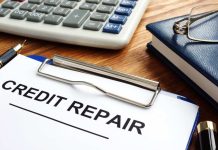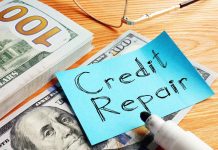
Rental properties can be a great way to get a passive income, better financial opportunities, and more. However, in order to reap the most out of your rental property, you may want to consider getting a refinance. The refinance process can seem a little confusing, but it doesn’t need to be! It may take time but understanding how to refinance a rental property is easier than you may think.
Understanding Property Mortgage
When people think of a mortgage, they usually think of a home loan for a primary residence. However, that isn’t always the case! In fact, the term mortgage refers to a loan that is used for any type of real estate, not just a primary residence. Hence the term, property mortgage. This includes rental properties and investment properties.
What is the Difference Between a Rental Property and an Investment Property?
When getting a better understanding about how the refinance process will work for a rental property, you may come across the term investment property. A rental property is just a property that an individual rents out to people. On the other hand, an investment property is a property that an individual uses to make money. For example, an investment property could be a home that was flipped and sold for a higher price. Another example of an investment property would be a rental property that the owner rents out in order to make money. The biggest difference between the two properties is the fact that there are different things that an owner can do compared to a rental property.
Understand it like this: every rental property is an investment property but not every investment property is a rental property. The difference between these terms won’t make too much a difference when it comes to getting a refinance.
What is a Refinance
In order to understand how to refinance a rental property, you must first understand what the refinance process will entail. There are multiple kinds of refinances but three popular options are:
- Rate-and-Term Refinance
- Cash-Out Refinance
- Cash-In Refinance
Rate-and-Term Refinance
When people think of a normal refinance, this is what comes to mind for most people. When a person gets a rate-and-term refinance, they are able to get an improved interest rate and better loan terms. For example, if someone’s original home loan was a 30-year term and had an interest rate of 3.45%, a rate-and-term refinance could update the term to 15 years with an interest rate of 2.15%. In this refinance, the amount of the new loan is based on the remaining balance of the original loan.
Cash-Out Refinance
This is a great option for people that want to tap into the amount of equity they have. While in a rate-and-term refinance, the new loan is based on the remaining loan balance, it is a bit of a different setup in a cash-out refinance. When homeowners get a higher loan amount, the extra funds will be given to the borrower during closing. These funds can be used towards anything but may be able to be considered tax-deductible if they are used towards improvements on the property.
Cash-In Refinance
Another popular option for homeowners that want to improve their loan-to-value (LTV) ratio is a cash-in refinance. With this type of refinance, homeowners can provide extra funds to the lenders during closing. These extra funds will reduce the overall amount that the borrower owes the lender.
How to Refinance a Rental Property/Investment Property?
The refinance process of a rental property/investment property isn’t as complicated as you may think. In fact, the process can be easily broken down into four manageable steps.
- Prepare for the Refinance
- Begin the Application Process
- Go Through the Underwriting Process
- Close on the Loan
1. Prepare for the Refinance
Proper preparation is key for anything in life, the refinance process is no different. In order to make the refinance as smooth as possible, you should better prepare yourself. There are two main ways that you can prepare. First, you will want to confirm your credit standing. Second, you will want to get your paperwork in order.
Your credit standing is important because it is a way that lenders assess your creditworthiness. In fact, many lenders require a minimum credit score, which on average is 620. If you find that your credit score needs some work, then be proactive! First check your credit reporting for any errors. If you find errors on your credit report, then you can dispute them and they will subsequently be dropped if they are in fact an error. When these errors are dropped, you will see the negative impact to your score drop as well. While you look for reports you also want to make active improvements to your credit. The easiest way to see an impact fastest is by getting your credit utilization to no more than 30%. Now that you have prepared your credit, it is time to get your paperwork in order.
Your paperwork is another important component that you should prepare. Documentation that verifies your identity, income, employment, property records, etc. are important to have handy. Having the proper documentation ready can make the process faster by more than you may think. You can verify the documentation requirements with your lender.
2. Begin the Application Process
Now that you are prepped and ready to go, it is time to begin the application process. You will need to gather all of the information that the lender specifies so that they can review it. While every lender is different, you will likely be able to submit the information online!
3. Go Through the Underwriting Process
The underwriting process is when the lender verifies the information that you provided. In most types of refinances this will also include an appraisal. An appraisal is done by a professional appraiser and determines the market value of the home. To prepare for an appraiser you will want to make sure your home is in tiptop shape! This step can take a long time so make sure that you work on your patience.
4. Close on the Loan
After the underwriting process, the underwriters will confirm that the lender can proceed in finalizing the loan. A few days before close you will receive a closing disclosure that details the information on your loan. The lender can go over this with you, and provides the perfect opportunity to ask any questions that you may have. In the end, the whole refinance process will likely take between 30-60 days but varies based on a bunch of factors. Closing on a refinance doesn’t come cheap, and individuals should expect to pay between 2% to 5% of the total loan amount.
Why Should You Refinance Your Rental Property/Investment Property?
There are plenty of common questions that homeowners have when it comes to refinancing their rental property/investment property. Two of the biggest questions that people ask are:
- Why Should You Refinance Your Rental Property?
- What are Drawbacks of Refinancing a Rental Property/Investment Property?
While homeowners know there are benefits to a refinance, it can get lost in all the chaos. Some popular reasons that people refinance their investment property include:
- Taking Advantage of the Economy
- Getting Cash Out of the Property
- Buy-Rehab-Rent-Refinance-Repeat (BRRRR) Strategy
- Spending Less Time Paying Off the Loan
- Getting a More Manageable Monthly Payment
Taking Advantage of the Economy
Taking advantage of the economy is a popular reason that people choose to refinance their home. When the economy is looking good, lenders want to provide funds to borrowers. A well performing economy can mean higher approval rates which can motivate borrowers to try to get a refinance. If the economy is in poor condition, then there may be more strict eligibility requirements and higher interest rates.
Getting Cash Out of the Property
Different refinances can provide different opportunities to borrowers. If an individual wants to tap into the equity that they have built up then a cash-out refinance can be a great option. The amount of money that a person can access varies by lender so make sure to see if there are any caps in place. The last thing you want is to go through the approval process but not get the funds you need.
Buy-Rehab-Rent-Refinance-Repeat (BRRRR)
This is a business strategy that people use when dealing with rental properties (which are a type of investment property). This strategy describes the process of buying a home, rehabbing it to be in a better condition, renting it out to tenants, refinancing the property, and repeating the process. The properties that people buy are usually distressed or foreclosed since they are usually listed for a less expensive price.
Spending Less Time Paying Off the Loan
When an individual chooses to refinance their rental property, they could change their repayment terms. For example, if the original loan was for a 30-year term, but after 8 years the borrower refinances for a 15-year term, then they skip on paying 7 years worth of a mortgage. This means that individuals can reach financial goals faster, pay less interest over the course of the loan, and more.
Getting a More Manageable Monthly Payment
People don’t like paying bills, especially if they are pricey. A mortgage payment can be a pretty hefty obligation to handle every month. With a refinance, individuals may be able to reconstruct their loan so much so that they get a lower monthly payment. These lower monthly payments can ease the stress that a person has to deal with, improve a person’s budget, etc.
Why You May Want to Avoid Refinancing a Rental Property/Investment Property?
Just as there are plenty of motivations to refinance your rental property/investment property, there are some drawbacks as well. Refinances may not make sense in your specific situation which means that you need to be aware of times where a refinance may not be the best option. Two popular reasons that people avoid a refinance is the:
- Closing Costs
- Interest Rate
Closing Costs
The refinance process isn’t cheap. Sometimes the cost of the refinance is too much for an individual to handle. Luckily, investment properties like a rental property can counteract the closing costs by bringing in additional funds to the individual, but that isn’t always the case. Sometimes, the costs are just too much to deal with. To counteract this deterrent, a good savings cushion or a no-closing-cost refinance may be good to consider.
Interest Rate
Most interest is paid at the beginning of the loan with a refinance. A mortgage is broken up into two parts: the interest rate, and the principal balance. At the beginning, a majority of the monthly payment goes towards interest instead of the principal balance (which actually goes towards paying down the loan). It’s not until later in the loan is when you will see more of your payment go towards the principal balance. With a refinance, the payment schedule is basically reset so it reverts back to the original setup where interest makes up most of the monthly payment.
How Does a Cash-Out Refinance Work on a Rental Property/Investment Property?
There is a bit of risk when it comes to a cash-out refinance in terms of a rental property/investment property. This increased risk can mean lenders could be more wary of providing this type of refinance. Some financial experts suggest counteracting this risk by considering cross-collateralizing instead.
How Much Equity Can You Tap Into on Your Rental Property/Investment Property?
The amount of equity that an individual can tap into varies on factors like the current property value, existing loan balance, lender restrictions, etc. A good rule of thumb for investment properties is to expect that there is a maximum LTV ratio of 25% to 30%. However, checking with your lender will accurately show you any restrictions that you may have to face.
Overall
Rental properties are a type of investment property that can be a great source of passive income, more financial opportunities, etc. Individuals that own these properties may be able to benefit from getting a refinance. There are a variety of types of refinance but three popular options are:
- Rate-and-Term Refinance
- Cash-Out Refinance
- Cash-In Refinance
Each refinance option can benefit homeowners in its own unique way. The process of refinancing these types of properties is not as complicated as someone may think. The process can be broken down into four easy to understand steps and is very similar to refinancing a primary residence:
- Prepare for the Refinance
- Begin the Application Process
- Go Through the Underwriting Process
- Close on the Loan
It is important to keep in mind that every lender is different and there are different types of refinances that have different implications. Talking to your lender about your goals of the refinance, your current financial situation, and your concerns can provide you with helpful information. This information can provide you the opportunity to make an educated decision if you find that you do want to refinance your rental property.
Article References
https://onproperty.com.au/rental-property-vs-investment-property/
https://loans.usnews.com/articles/how-to-refinance-a-rental-property
https://themortgagereports.com/74024/cost-to-refinance-a-mortgage
https://themortgagereports.com/25521/cash-out-refinance-rental-property-guidelines-mortgage-rates




























